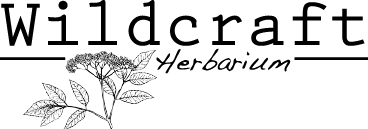Support your local CSA! January 30 2022

When we started our soap business back in 2014, we stated on our "About Us" page that "In addition to the foods and medicines you put into your body, we believe what you put on your body is just as important."
Today we're going to talk about the foods you put into your body. Specifically, by supporting your local CSA (in our case, Minto Island Growers).
CSA stands for “community supported agriculture.” There are various ways you can support your local farmers, like buying your produce at the local farmer’s market. However, CSA membership takes it a step further. Members of CSAs buy a portion (or share) of a local farm’s harvest for the year. The fee, which is often paid annually, is given in exchange for a weekly or bi-weekly box of seasonal farm items.
Nutritious and super fresh produce every week! CSAs can only provide what’s in season, which means you always get the very freshest fruits and vegetables. Many CSAs are certified organic for even more health benefits.
For over 25 years, CSAs have become a popular way for consumers to buy local, seasonal food directly from a farmer.
Here are the basics: a farmer offers a certain number of "shares" to the public. Typically the share consists of a box of vegetables, but other farm products may be included. Interested consumers purchase a share (aka a "membership" or a "subscription") and in return receive a box (bag, basket) of seasonal produce each week throughout the farming season.
This arrangement creates several rewards for both the farmer and the consumer. In brief:
Advantages for farmers:
• Get to spend time marketing the food early in the year, before their 16 hour days in the field begin
• Receive payment early in the season, which helps with the farm's cash flow
• Have an opportunity to get to know the people who eat the food they grow
Advantages for consumers:
• Eat ultra-fresh food, with all the flavor and vitamin benefits
• Get exposed to new vegetables and new ways of cooking (what do we do with "rapini"?)
• Usually get to visit the farm at least once a season
• Find that kids typically favor food from "their" farm - even veggies they've never been known to eat
• Develop a relationship with the farmer who grows their food and learn more about how food is grown
It's a simple enough idea, but its impact has been profound. Tens of thousands of families have joined CSAs, and in some areas of the country there is more demand than there are CSA farms to fill it. The government does not track CSAs, so there is no official count of how many CSAs there are in the U.S.. LocalHarvest has the most comprehensive directory of CSA farms, with over 4,000 listed in their grassroots database.
Variations
As you might expect with such a successful model, farmers have begun to introduce variations. One increasingly common one is the "mix and match," or "market-style" CSA. Here, rather than making up a standard box of vegetables for every member each week, the members load their own boxes with some degree of personal choice. The farmer lays out baskets of the week's vegetables. Some farmers encourage members to take a prescribed amount of what's available, leaving behind just what their families do not care for. Some CSA farmers then donate this extra produce to a food bank. In other CSAs, the members have wider choice to fill their box with whatever appeals to them, within certain limitations. (e.g. "Just one basket of strawberries per family, please.")
CSAs aren't confined to produce. Some farmers include the option for shareholders to buy shares of eggs, homemade bread, meat, cheese, fruit, flowers or other farm products along with their veggies. Sometimes several farmers will offer their products together, to offer the widest variety to their members. For example, a produce farmer might create a partnership with a neighbor to deliver chickens to the CSA drop off point, so that the CSA members can purchase farm-fresh chickens when they come to get their CSA baskets. Other farmers are creating standalone CSAs for meat, flowers, eggs, and preserved farm products. In some parts of the country, non-farming third parties are setting up CSA-like businesses, where they act as middle men and sell boxes of local (and sometimes non-local) food for their members.
Shared Risk
There is an important concept woven into the CSA model that takes the arrangement beyond the usual commercial transaction. That is the notion of shared risk: in most CSAs, members pay up front for the whole season and the farmers do their best to provide an abundant box of produce each week. If things are slim, members are not typically reimbursed. The result is a feeling of "we're in this together". On some farms the idea of shared risk is stronger than others, and CSA members may be asked to sign a policy form indicating that they agree to accept without complaint whatever the farm can produce.
Many times, the idea of shared risk is part of what creates a sense of community among members, and between members and the farmers. If a hailstorm takes out all the peppers, everyone is disappointed together, and together cheer on the winter squash and broccoli. Most CSA farmers feel a great sense of responsibility to their members, and when certain crops are scarce, they make sure the CSA gets served first.
If you want to find out more about local CSAs in your area, check out the LocalHarvest website, and find yourself a CSA in your area to join. You'll be glad you did!
